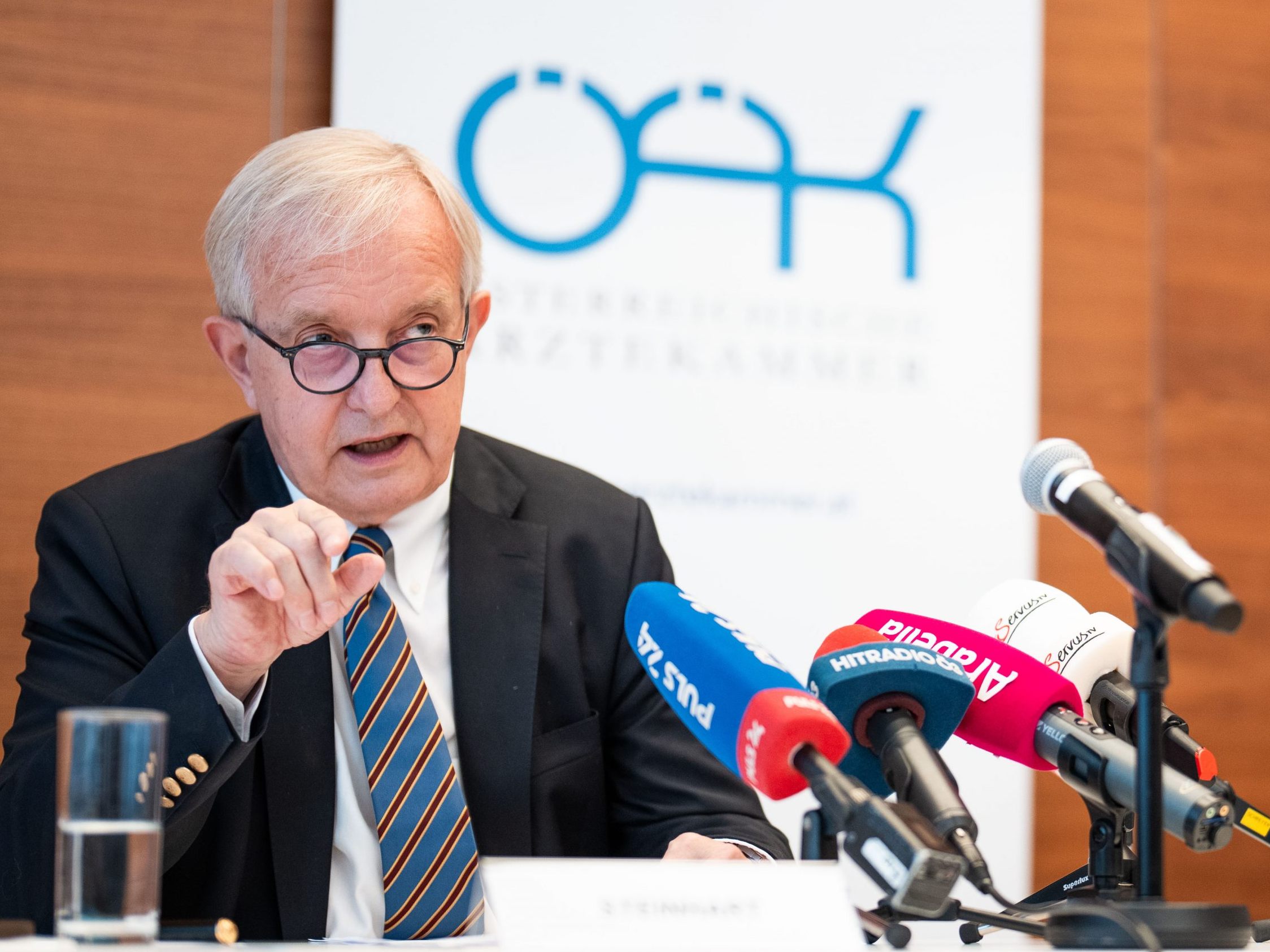Medical Association Warns: Long-Term Risk of Doctor Shortage

Steinhart explained at a press conference in Vienna that many doctors from the baby boomer generation will retire in the coming years. "This contrasts with the problem that the population is growing" and requires more care. At the same time, the number of contracted doctors has remained almost unchanged over the last 20 years. Meanwhile, the population has increased from about eight million to approximately 9.2 million.
Medical Association Sees Major Problem Due to Emigration of Fully Trained Doctors
Steinhart pointed out the emigration of medical students trained in Austria as a particular problem: "One third of the doctors do not become effective in providing care here" - they return to their home countries or to countries where more attractive working conditions are found. The political demand for more medical study places, as currently advocated by Health State Secretary Ulrike Königsberger-Ludwig (SPÖ), is still not something the Medical Association can support. "This gap cannot be effectively closed by more study places - we would merely lose even more well-trained doctors to foreign countries, which would result in considerable additional costs for us," it was stated in a press release.
Chamber Director Lukas Stärker, who presented the new statistics together with Steinhart, pointed out that as of December 31, 2024, 52,005 doctors were working in Austria. This corresponds to an increase of 2.7 percent compared to the previous year. Of these, 9,620 were resident doctors, 12,882 general practitioners, 29,385 specialists, and 118 licensed doctors. Of the 52,005 registered doctors, 49.9 percent (25,968) are female. The highest proportions of women are in general medicine (60.8 percent) and among resident doctors (56.4 percent). Among specialists, 43 percent are women.
Stärker also pointed out the problem of the aging medical workforce: In the past twenty years, the proportion of those over 55 has increased significantly. By the end of 2024, 33.3 percent of the total medical workforce was over 55 years old. For comparison: Between 1990 and 2000, this proportion was consistently around 17 percent.
Many Retirements Create High Demand for Replacements
The large group of those over 55 will reach or exceed the standard retirement age in the next ten years. Chamber Director Stärker quantified this number at 18,189. This results in an annual replacement demand of 1,818 per year - "just to maintain the status quo of headcount." Considering additional factors - such as the fact that women, who now make up a higher proportion, typically reach retirement age even earlier, a potential annual replacement demand of around 1,932 doctors per year arises.
Currently, Austria has a sufficient number of doctors to ensure healthcare provision, emphasized Steinhart. "There is no shortage of doctors per se. Rather, there is a shortage of doctors in the public system," said Steinhart. In the longer term, however, the situation does not look good. The stated need for replacements of up to over 1,900 new doctors per year is met by 1,756 study places for human medicine nationwide annually (excluding private universities). This may seem sufficient at first glance, according to Steinhart. However, one must not forget that around one-third of graduates do not become effective in the Austrian healthcare system. "We need to ensure that we can close this gap as best as possible."
Medical Association Calls for Making Locations More Attractive and Reducing Bureaucracy
The president also pointed out that there is a change in the medical profession as a whole, for example, due to the trend towards part-time work and the decreasing willingness to work a very high number of hours. The new generation wants to work differently, have more time for patients, but also for family and private life. This situation must be taken into account: "To meet this, working conditions - both in hospitals and in private practice - must become more flexible," said Steinhart.
This means part-time models, partial insurance contracts, and job-sharing - as well as employment opportunities and the possibility of simultaneous work in the public system and as a private doctor. Austria must offer internationally competitive working conditions if it wants to retain doctors in the country or attract those from other countries, he emphasized. "We need to motivate a third more to join our system here."
Also urgently needed is a significant reduction in bureaucracy both in insurance doctor practices and in hospitals. Unnecessary bureaucracy costs time that is urgently needed for patient care - and reduces job satisfaction. According to the Medical Association, there is also a need for better equipment for the electronic health record ELGA. At the European level, an EU-wide quota of minimum study places is needed to minimize "pull effects" between countries. And graduates of medical studies in Austria should be offered training positions immediately after graduation.
Also Demanding ÖGK Reform and 1,000 Additional Insurance Positions
Steinhart also described a "fundamental reform" of the Austrian Health Insurance Fund (ÖGK) as relevant. The ÖGK must finally return to its "core task," namely providing the population with enough insurance doctors. To meet the demand, at least 1,000 additional insurance positions are needed. "Real structural reforms" are needed, not "petty discussions" about individual examinations or private doctors.
(APA/Red)
This article has been automatically translated, read the original article here.





